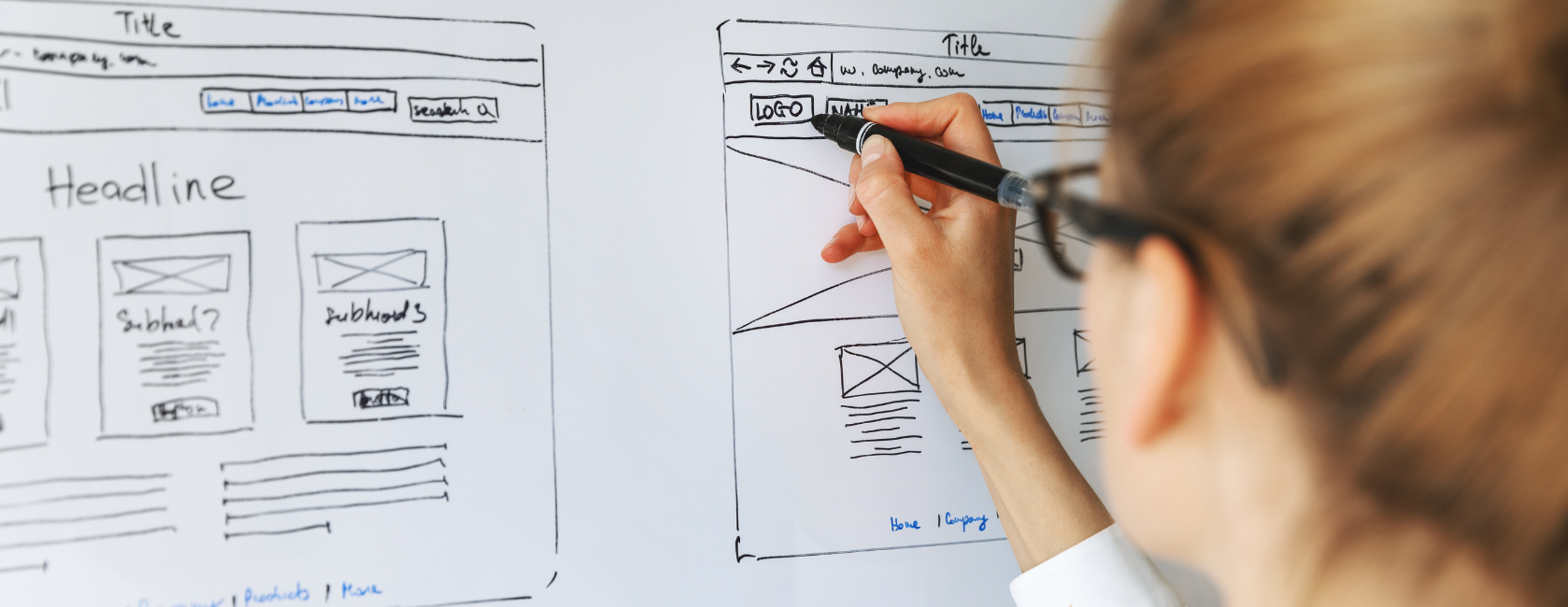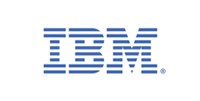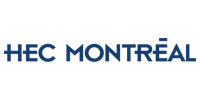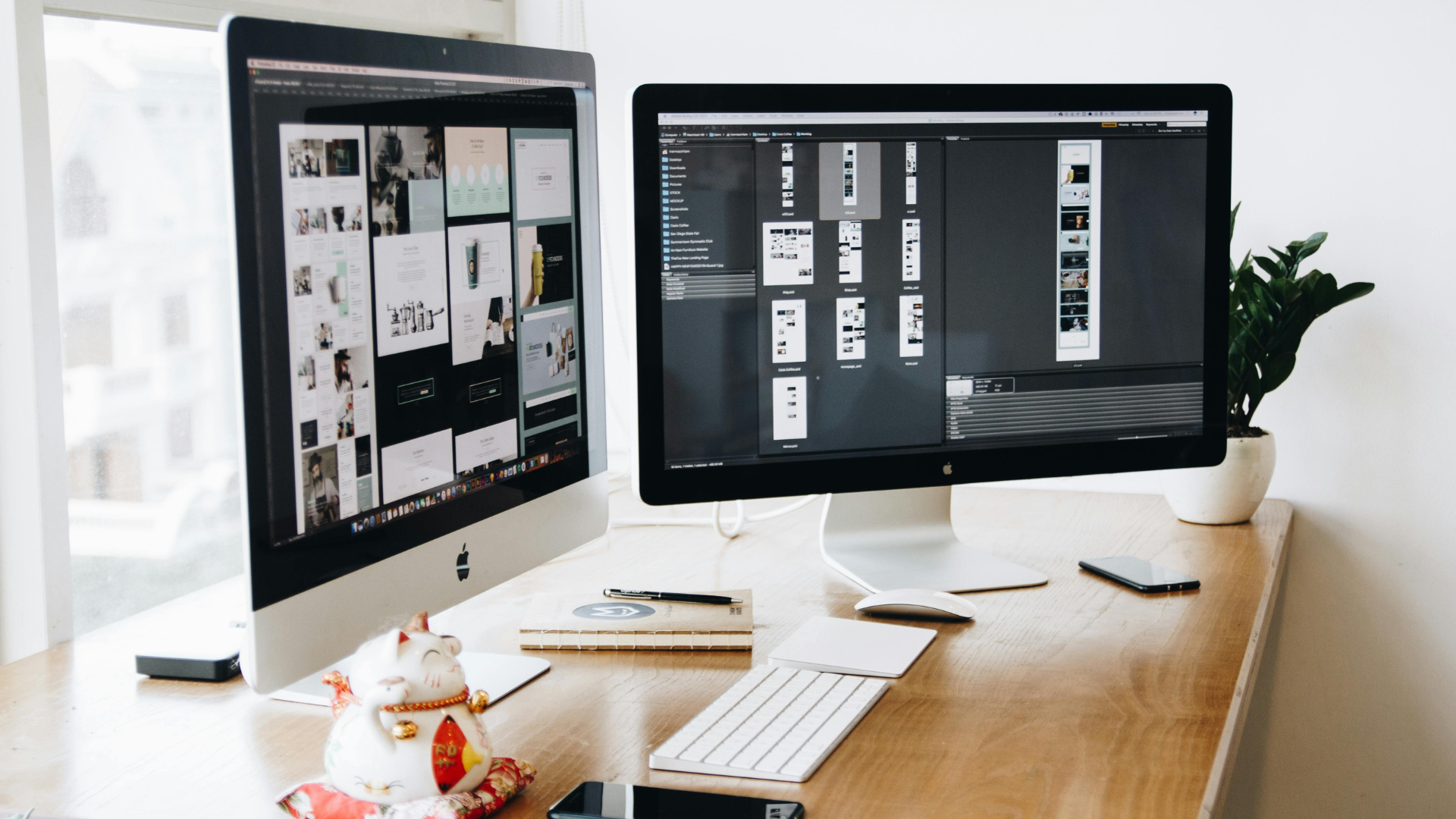Career Pathways
UX/UI
The demand for creative minds in UX/UI is surging due to increased web and mobile device usage, where visuals attract attention and user experience enhances retention. This field blends design, psychology, and business, allowing designers to create personalized experiences through research and user feedback. With opportunities for freelancing and competitive salaries, individuals passionate about UX/UI can make a lasting impact and enjoy long-term success.

Growing industry
Digital designer roles are expected to rise by 16% between 2022-2032.
In-demand skill set
Job opportunities are expected to increase with ongoing expansion of e-commerce.
Desirable payscale
The average digital interface designer salary in the United States is $84, 240.

Iuliia Bakhtoiarova, Assistant Vice President and UI Designer
Listen as Assistant Vice President and UI Designer of Synchrony, Iuliia Bakhtoiarova, shares what a work day may look like utilizing her UX/UI skills.
It depends on the day. Sometimes, you design. You take UX research and you create mockups based on the results that we acquired through the testing. And then the mockups and prototypes, we add animations to those screens and it’s not one day, it’s a whole process. You can do bits and pieces of the process on any given day. At the same time, you work closely with the agile team. There are some calls with agile teams to understand what they’re working on. If they are working on any UX items, we have to be involved to make sure that the developers build out our UI interfaces according to mock ups. So we are also guarantors of good UI in a production.
Discover your career opportunities
There are diverse job titles within the UX/UI industry. Below are a few examples to consider:
| Entry level | Mid level | Senior level | Entrepreneurial |
|
| Chief Design Officer (CXO) | ||||
| Creative Director | ||||
| Design Director | ||||
| Learning Experience Designer | ||||
| Product Designer | ||||
| UX Content Strategist | ||||
| UX Designer | ||||
| UX/UI Architect | ||||
| UX/UI Consultant | ||||
| UX/UI Designer | ||||
| UX/UI Developer | ||||
| UX/UI Director | ||||
| UX Researcher | ||||
| UX Writer | ||||
| VP of Product | ||||
| Web Designer |
Learn about topics in UX/UI
Register for a course on edX to learn about a variety of topics within the UX/UI industry.
How can I acquire UX/UI skills and turn them into a career?
If you’re interested in pursuing your own career in UX/UI, we recommend taking these steps:
Research is key when it comes to any career, and a career in UX/UI is certainly no exception. Take advantage of all the information out there, whether through browsing the internet for job titles, listening to tech-relevant podcasts, or getting connected to professionals in the areas or positions that interest you.
One key part of the research phase is networking. This simple step is often overlooked and undervalued but can significantly impact your career trajectory. To clarify your career goals and aspirations, you must talk with professionals about what the work looks like.
You open a door of opportunity in your career by reaching out to professionals in your targeted fields, positions, and companies. Connecting with UX/UI professionals who could vouch for you and provide hard-to-find intel about the industries or organizations of interest is invaluable.
Check out our Networking guide and Networking outreach samples for help getting started.
To supplement your understanding of what others are doing professionally, gain clarity on your own goals and aspirations. Ask yourself what about UX/UI interests you — the possibilities are endless.
Your career goals may require skills in user research, wireframing, prototyping, visual design, and usability testing. Transferable skills such as problem-solving, effective communication, and project management can greatly enhance your ability in the field of UX/UI design. Here is a compilation of UX/UI competencies and adaptable skills:
UX/UI skills
- Agile methodologies and processes
- Basic marketing concepts
- Product management
- User-centric design research
- Visual prototyping and wireframing
- User interface deployment
- Web prototyping and development
Transferable skills
- Adaptability
- Creativity
- Curiosity
- Empathy
- Organization
- Attention to detail
- Problem-solving
- Strong communication
- Strong business acumen
- Strong presenter, collaborator, storyteller
When it comes to acquiring UX/UI skills, you have numerous options. We recommend selecting a path that aligns best with your needs and learning style. Here are a few options to consider:
Self-education — If you want to learn asynchronously, informally, or casually, self-education is a great place to start. There are many approaches to this method that support various career goals, budgets, learning preferences, and time commitments. Here are some ways to self-educate:
- Informal opportunities: Explore books, articles, and even research papers to expand your UX/UI knowledge and learn what’s happening in the field. Not a reader? Plenty of videos, podcasts, and other forms of multimedia that can teach you a thing or two about UX/UI.
- Online courses: If you prefer a more structured or socialized learning experience, online courses might be a good option. edX.org offers several instructor-led and self-paced courses.
- Professional certifications: When you want a less casual learning experience but don’t have needs that warrant a boot camp, professional certifications may be the best fit for you. Professional certifications are a great addition to your resume and prove your technical skills for roles in UX/UI. edX.org offers many certificate programs that may interest you.
Boot camps — Experienced curriculum teams design these innovative programs to help you achieve your career goals in a fraction of the time it takes to complete a traditional degree. With many boot camps lasting just 3-12 months, you’ll be amazed at how quickly you can gain the knowledge and expertise you need to launch your dream career. Explore popular UX/UI boot camps on edX.org.
Building a UX/UI portfolio is vital to demonstrate your design skills and practical experience, setting you apart from the competition. It establishes credibility and showcases your unique approach and problem-solving abilities. Also, it builds trust with potential employers or clients and serves as a conversation starter during interviews. Today, it is an essential tool for career advancement.
Here are some pointers for constructing an outstanding UX/UI portfolio:
Highlight your skills — Customize your portfolio to demonstrate your UX/UI skills, such as your proficiency in user research, visual design, and usability testing.
Showcase your experience — Showcase your projects, including the ones you’ve worked on, or highlight your practical experience. Illustrate how you’ve successfully applied your UX/UI skills in real-world scenarios.
Use storytelling to support your design work — Narrate the design journey, explaining your design process, decision-making rationale, and how you’ve addressed specific design challenges. This provides insight into your mindset and approach.
Once you achieve your UX/UI career goal, celebrate your success. The career journey is full of ups and downs, and every victory deserves acknowledgment.
Your journey doesn’t end here — it’s only just beginning. Give yourself grace and understand that careers are not linear. Here are some ways you could continue growing your UX/UI skills:
Continuous learning — Make it a habit to explore our extensive course catalog on edX.org for ongoing educational opportunities. Now that you’ve taken the first steps in your career, there’s always value in refreshing your skills, deepening your industry knowledge, or delving into related subjects that can enrich your work or align with your interests.
Advancement — Advancing in your UX/UI career can vary significantly depending on the industry, role, and function. You may find yourself progressing to the role of a UX designer, or you might even consider venturing into entrepreneurship by establishing your own creative agency.
Director of user experience (UX): Oversees all aspects of the user experience within an organization, leading and managing a team of UX/UI designers, researchers, and other professionals. Defines the UX strategy, sets design standards and guidelines, aligns UX goals with business objectives, and ensures a cohesive and user-centered approach across all products and services.
Principal UX designer: Responsible for leading complex design projects, provides mentorship and guidance to junior team members, and makes high-level design decisions. Possesses a deep understanding of user-centered design principles, conducts advanced user research, and creates innovative design solutions that address intricate user needs.
UX research director: Specializes in user research and leads the research function within an organization. Oversees a team of UX researchers and strategizes on research methodologies to gain valuable insights into user behavior and preferences. Defines research goals, manages budgets and resources, and collaborates with UX/UI designers to translate findings into actionable design improvements.
VP of product design: Responsible for shaping the overall product design vision, aligning it with the company’s strategic objectives. Oversees multiple design teams and collaborates with product managers and engineers.
Chief experience officer (CXO): Responsible for the overall experience that customers have with the company’s products and services, shaping the user experience strategy. Focuses on creating a cohesive and positive customer journey, centered on consistency, quality, and customer satisfaction across all touchpoints.
Career shifts — Periodically assess your contentment with your daily responsibilities. If you discover that your current role doesn’t satisfy you, take the time to analyze what aspects you enjoy and what you find less appealing. Keep an eye out for growth opportunities within your organization and be open to pursuing career shifts that leverage your background, skill set, and passions.
Remember, your career is a dynamic and evolving journey, and embracing change and continuous learning will be instrumental in your long-term success in UX/UI.
What are my next steps?
Start learning now
Register for a course on edX to learn about a variety of topics within the field of UX/UI.
Watch a session
Watch a relevant session on our Events Page to learn more about the industry and other professional’s experiences within it.
Charting New Horizons: Navigating Career Shifts From Employee To Entrepreneur
Whether you’re contemplating a professional transition, venturing into freelancing, or aiming to elevate your entrepreneurial prowess, Lydia’s presentation guarantees valuable insights and tangible strategies. View this webinar to get inspiration, motivation, and practical advice as Lydia guides you through the dynamic journey from being an employee to flourishing as an entrepreneur. The views and opinions…

Designing For Financial Success: Harnessing The Power Of Fintech And UX Design
In this webinar, we delve into the importance of user experience (UX) design in creating financial products, discover industry trends, and provide valuable insights into the ever-evolving job market. Our speaker Saurabh Bose is the Principal UX Designer at Backbase and has over 15 years of experience in designing innovative design solutions and entrepreneurial projects.…

Strategies For Success: Establishing A Product Management Foundation
View this insightful webinar where we unravel the secrets to early success in the realm of product management. Delve into the essential strategies and skills vital for junior Product Managers, providing a strong foundation for a thriving career. Senior Product Manager, Jess McPheron, will give us a closer look at his path to Product Management,…
















